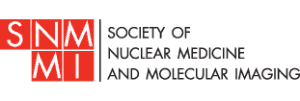Interview with Dr.Bennett Greenspan, president of Society of Nuclear Medicine and Molecular Imaging, SNNMI
ePatient : You have been a member of the SNMMI for a long time and just became its President. For those who are not familiar with the SNMMI, can you describe succinctly its role in the field of nuclear medicine.
The Society of Nuclear Medicine and Molecular Imaging (SNMMI) was founded in 1954 (as the Society of Nuclear Medicine [SNM]). The mission of SNMMI is “To improve human health by advancing nuclear medicine, molecular imaging, and radionuclide therapy.” The SNNMI does this by supporting 5 Domains:
1. Quality of Practice.
2. Innovation/Research and Development.
3. Workforce pipeline and lifelong learning.
4. Advocacy.
5. Outreach.
SNMMI provides educational materials and an annual meeting that includes many scientific sessions and continuing education sessions.
SNMMI provides guidance documents, which include procedure standards that provide guidance of best practice for Nuclear Medicine physicians, and appropriate use criteria, which will guide clinicians in optimal use of imaging
in managing their patients. SNMMI also supports quality assurance programs in nuclear medicine to constantly improve the quality of practice. SNMMI publishes the Journal of Nuclear Medicine, which contains the latest research in the field and continuing education in basic science. SNMMI promotes research in the field of Nuclear Medicine by advancing the development and approval of new tracers and radionuclide therapies and other imaging
technologies. SNMMI supports attracting bright young physicians and scientists to work in nuclear medicine/molecular imaging, supports high quality training, and supports lifelong learning. In Advocacy, SNMMI works with government regulators, policy makers, and other federal agencies, as well as Congress, to support and improve the integrity of the isotope supply chain, and promote adequate and appropriate reimbursement for nuclear
medicine procedures. In Outreach, SNMMI promotes the value of Nuclear Medicine in the care of patients, to referring physicians, hospital regulators, other medical societies and the public.
ePatient : What are the most dramatic changes that you have seen in the field of nuclear medicine over the past 10 years?
We have seen dramatic advances in the science of Nuclear Medicine over the past 10 years. These advances build on the scientific advances in basic sciences, especially biochemistry and immunology. In the past few years, we have seen approval by the US Food and Drug Administration (FDA) of several diagnostic imaging agents, including amyloid imaging tracers, and most recently, Fluorine-18 Fluciclovine for imaging prostate cancer and Gallium-68 DOTATATE for imaging neuroendocrine tumors. We have also recently obtained FDA approval for Radium-223 dichloride for radionuclide therapy of castrate-resistant metastatic prostate cancer.
ePatient : How do you see the field of nuclear medicine evolving during thenext decade?
I believe we will see FDA approvals of a number of diagnostic tracers and therapeutic radionuclides for imaging and radionuclide therapy of various cancers. I think within 10 years, if not sooner, we will see major advances in
radionuclide therapy of many cancers, with much better outcomes and far less morbidity. This really will be precision medicine. We may see improvement in diagnosis and evaluation of infectious and inflammatory diseases with nuclear medicine techniques. In cardiology, we will see advances in imaging of heart disease, in diagnosis and risk assessment, especially of cardiac ischemia. In neurology, I expect we will see greater use of imaging for the various types of dementia, for diagnosis and prognosis, and also response to therapy, if we can develop useful therapies.
ePatient : To your opinion, what role do you see the Pangea-ePatient magazine play for nuclear medicine practice?
I think this magazine has a wonderful potential to raise awareness in patients, referring physicians and the public of the value that Nuclear Medicine studies and Nuclear Medicine therapies can provide in patient care. The magazine describes in relatively short articles how Nuclear Medicine studies and therapies can improve patient outcomes, many times with much less morbidity, in terms that can be easily understood by the public, and especially by health care administrators, government regulators, as well as referring physicians. I see this magazine as an important adjunct to the growth of the practice of Nuclear Medicine.




